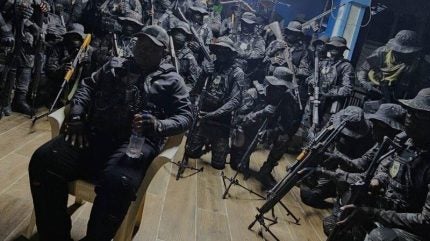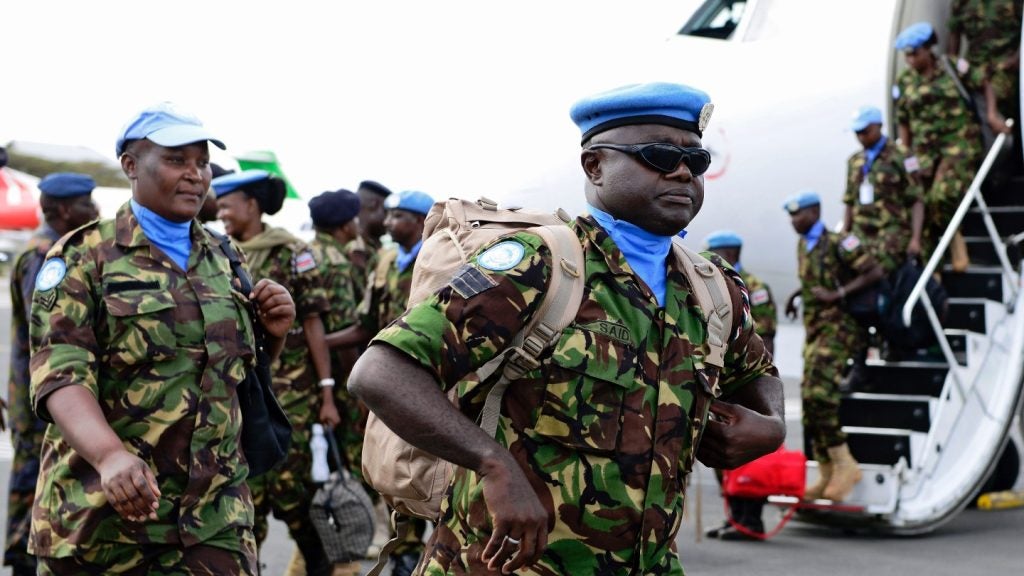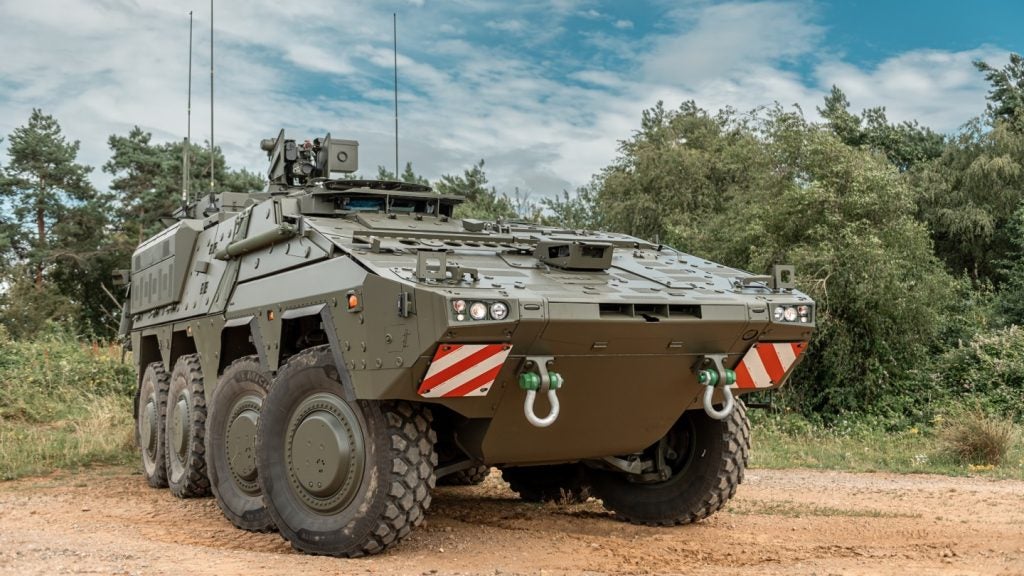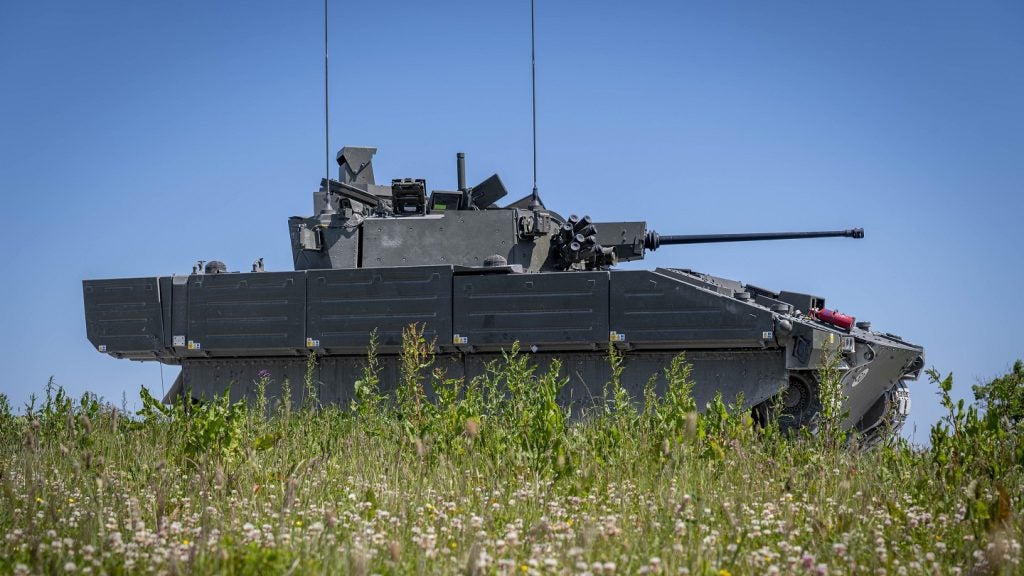
Concerns are rising over the armed reception awaiting special Kenyan forces due to arrive in Haiti any day now.
Up to 2,500 officers have been deployed as part of a UN mission to tackle the state of near-anarchy in Haiti, which has been beset by months of gang crime, widespread killings and a health system “on the verge of collapse”.
For the Kenya-led military force, the task at hand has become far more complex than neutralising a web of amateurish Haitian gangs.
5 Segonn, the G9 and other prominent crime groups are pivoting to present themselves as an organised security force. Photos and videos across social media show 5 Segonn members uniformed, growing in number and carrying more powerful weapons, according to an investigation by the New York Times.
Colombian President says stolen arms “probably” in Haiti
As of March, 5 Segonn stepped up from posting rap videos to rebranding as the Unité Village de Dieu (UVD) cartel.
This was not just symbolic. 5 Segonn members have since been identified wielding Belgian-designed FN FAL rifles, typically only carried by militaries.
How well do you really know your competitors?
Access the most comprehensive Company Profiles on the market, powered by GlobalData. Save hours of research. Gain competitive edge.

Thank you!
Your download email will arrive shortly
Not ready to buy yet? Download a free sample
We are confident about the unique quality of our Company Profiles. However, we want you to make the most beneficial decision for your business, so we offer a free sample that you can download by submitting the below form
By GlobalDataThe so-called ‘right arm of the free world’, the FN FAL was first produced in the 1950s for developed western nations, says Wilson Jones, defence analyst at GlobalData.
“The FAL is a Cold War-era full battle rifle, meaning it shoots a large calibre cartridge 7.62mm compared to the modern intermediate 5.56mm cartridge,” Jones tells Army Technology. “It was sold to other nations as surplus when more modern weapons in intermediate cartridges became available. That likely explains how Haitian gangs have acquired so many.”
While the Kenyan special forces are expected to be armed with more modern guns and cartridges, the presence of FN FALs increases the difficulty of the pending Haiti mission.
“The FN FAL is an exceptionally accurate semi-automatic rifle capable of firing in burst mode and has a 20-round detachable magazine,” adds Abhijit Apsingikar, also a defence analyst at GlobalData. “Although it is old by today’s standards and somewhat obsolete, it is still used in many developing countries.”
Jones, however, notes that the FN FALs owned by 5 Segonn are unlikely to be in good condition or well-maintained.
“It’s difficult to guess the quality of what your average gang member has, but presumably it’s old and not well cared for,” he says. “Militias aren’t known for their upkeep skills.”
The question remains as to how the Haitian gangs got their hands on military-grade arms. In a country which does not manufacture weapons, a UN report published in January found almost every model of gun in Haiti: Russian AK-47s, US-made AR-15s and Israeli Galil assault rifles, to name a few.
Most fingers point to Colombia.
On 30 April, Colombian President Gustavo Petro revealed that more than one million bullets, thousands of explosives, some guns and missiles had been stolen from military bases.
“[These have gone] probably to foreign conflicts,” Petro told reporters at the time. “The closest one is Haiti, which is seven hours away by speedboat from the Base La Guajira, and probably also to the international arms smuggling market.”
Petro blamed corruption, while Colombia’s Defence Minister Ivan Velasquez has launched an internal investigation.
Colombia’s government is not solely to blame. Firearms and ammunition have been smuggled by land, air and sea from US states such as Georgia, Texas and, most prominently, Florida.
“This is speculation, but there are probably a number [of arms] that have reached Haiti from the US, as it is the largest source of firearms for surrounding nations,” Jones adds.
Kenyan forces’ deployment postponed
Of the 2,500 officers allocated to this mission, 1,000 will be from Kenya, along with agents from Paraguay, Chile, Jamaica, Grenada, Nigeria, Burundi, Chad and Mauritius.
Uncertainty continues to swirl around the arrival date.
A planned flight from Nairobi to Port-au-Prince was postponed on Tuesday (21 May), despite US officials saying the Kenyan troops’ would be deployed by yesterday (23 May) to coincide with Kenyan President William Ruto’s state visit to the White House.
Regardless, the UN taskforce will arrive in the coming days. It looks set to be met by a wall of the 100 or so Haitian gangs that have turned Port-au-Prince into a battleground since President Jovenel Moise’s assassination in 2021.
Formed in late February, this “non-aggression pact” has seen the two rival gang coalitions in Haiti’s capital create a “united front aimed at mounting concerted attacks to bring the state to its knees, derail the plans of the multinational security mission and secure an amnesty for all their crimes”, according to Diego Da Rin, Haiti expert at International Crisis Group.
“With the imminent start of the deployment of the force, [the gangs] have stepped up their attacks to discourage the countries that have expressed their willingness to participate in the mission,” Da Rin tells Army Technology. “Over the last week, they have destroyed several police stations and a prison in the metropolitan area of Port-au-Prince with backhoes.”

Kenyan forces have extensive experience in international peacekeeping, from intervening in the Sierra Leone Civil War in 1999 to Liberia in 2004, but Haiti represents unchartered – and potentially distrustful – territory.
Haitians still bear the scars of the last UN intervention in 2007. 114 members of the 950-large Sri Lankan peacekeeping mission were accused of sexual misconduct and abuse in Haiti, including of children.
UN peacekeepers were also found responsible for spreading a cholera epidemic which killed 2,120 people.
Amid such controversy, the violent promises of gang leaders like the G9’s Jimmy ‘Barbeque’ Chérizier to cause “civil war” against President Ariel Henry and the UN taskforce have perhaps gained greater traction among some Haitians than normal.
Most, however, have had their lives uprooted by the G9 and 5 Segonn’s brutal tirade on Haitian infrastructure.
“Many hospitals have had to close or greatly reduce their operations because they do not have sufficient medical supplies, have been attacked and raided, or are in extremely insecure areas that are inaccessible to staff,” Da Rin tells Army Technology. “Gang violence is mainly concentrated in the capital, but the consequences of the ongoing offensive are being felt throughout the country. The largest container port and the main oil terminal have been operating sporadically for almost three months now. This has considerably reduced the inflow of fuel, essential goods and humanitarian assistance.”
As UN warnings of a humanitarian crisis grow louder every day, all eyes now turn to the expected showdown between Kenyan forces and Haitian gangs in Port-au-Prince.






